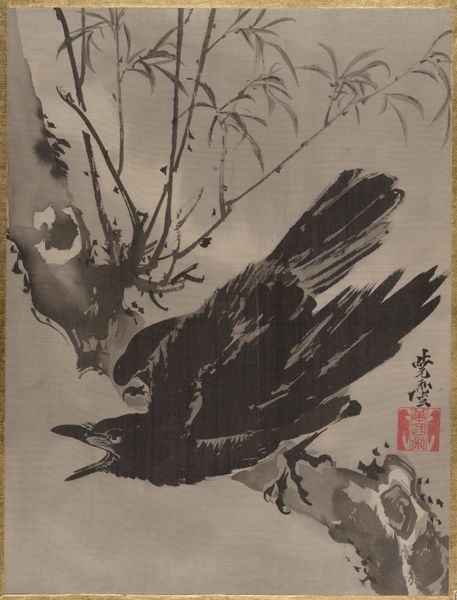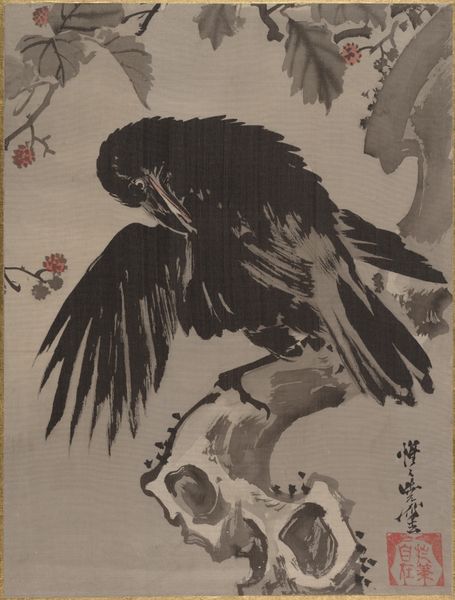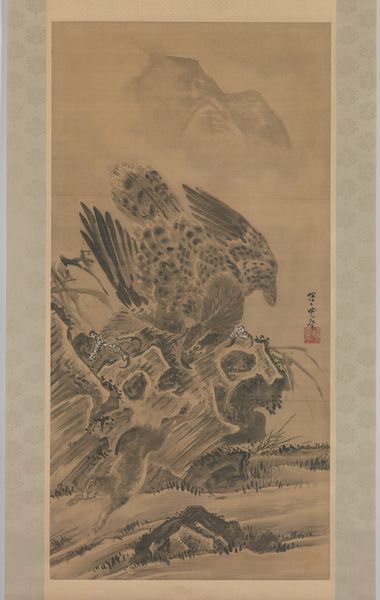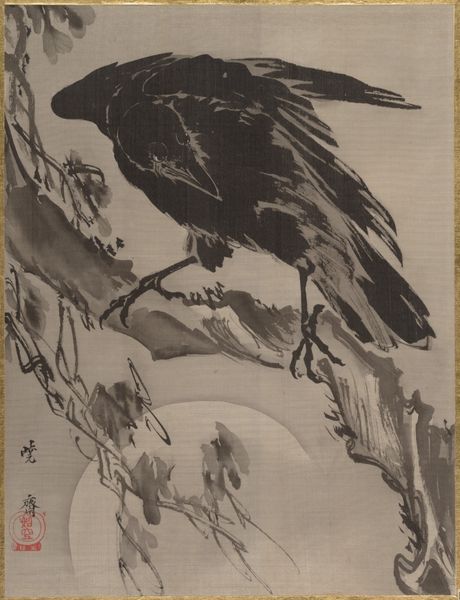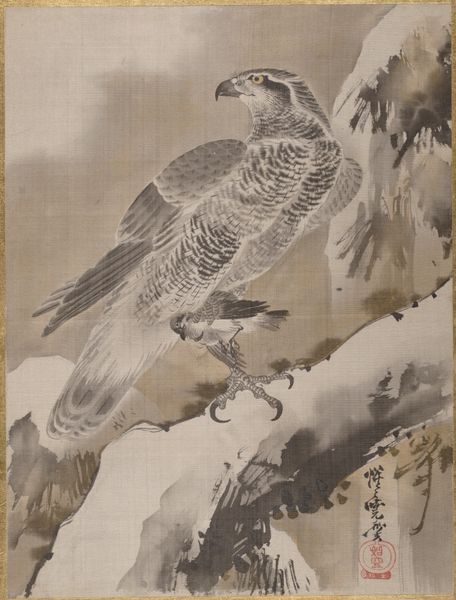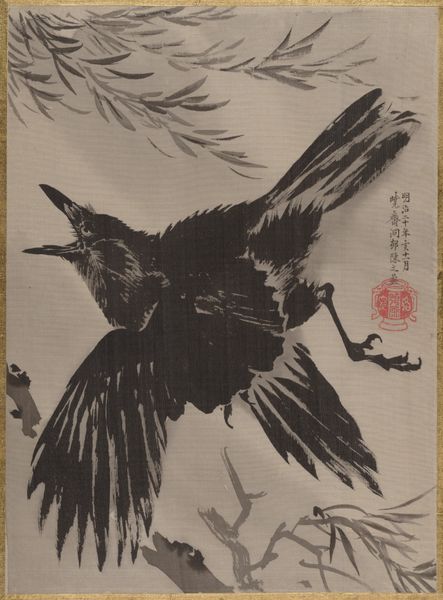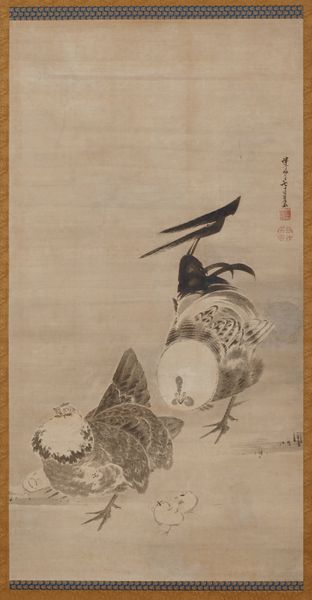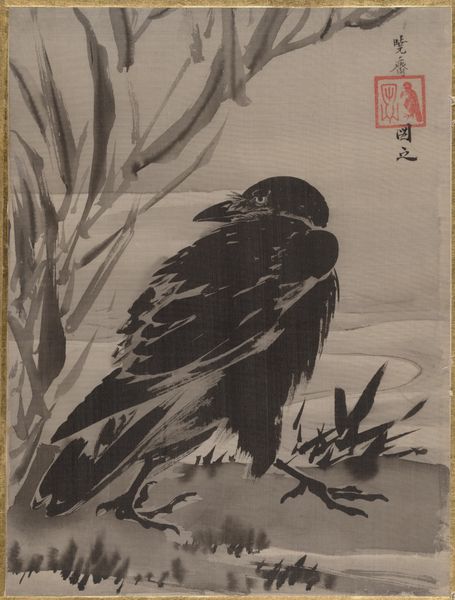
Dimensions: 45 1/8 × 17 1/8 in. (114.62 × 43.5 cm) (image)81 × 23 1/2 in. (205.74 × 59.69 cm) (mount)
Copyright: Public Domain
Editor: So, this ink painting is called "Kite and two crows," made by Yosa Buson around 1766 to 1770. It's a hanging scroll and gives me a feeling of quiet observation. What’s your interpretation of this scene? Curator: I see a powerful commentary on social hierarchy and the outsider. The kite, a predator, is visually separated from the crows, who huddle together, perhaps for protection, or out of a shared marginalization. What do these birds evoke for you, considering the political climate of the late Edo period? Editor: I hadn't considered the political implications! I was mostly thinking about the visual arrangement – the dark crows against the lighter kite and background. The branches they’re perched on add a structural element, almost like a stage. Curator: Exactly. But a stage for what kind of performance? The crows, often associated with commoners, are in the foreground, seemingly under the gaze of the kite, possibly representing the ruling class or a more powerful entity. How does this arrangement inform our understanding of power dynamics in art, and society more broadly? Editor: I guess I was seeing the birds more literally, not as symbols. It’s interesting to think about how the artist used them to make a statement about social classes. Do you think that's a common theme in East Asian art from this period? Curator: While not always explicit, this negotiation of social critique through natural imagery is a recurrent strategy. Artists often use metaphors found in nature to explore these complex relationships, allowing for veiled yet potent commentary. Consider also how the starkness of the ink drawing emphasizes the vulnerability of the crows. Does that amplify your sense of their social standing? Editor: It definitely does. I see a kind of tension between the aesthetic beauty of the painting and its potentially critical message. Thanks for helping me look beyond the surface! Curator: My pleasure. Recognizing art as a dialogue with its time allows us to extract its rich complexity and nuance. The birds may seem like a quiet moment, but their placement speaks volumes.
Comments
minneapolisinstituteofart almost 2 years ago
⋮
A pair of crows huddle against a downpour of rain, suggested by diagonal bands of ink wash and downturned leaves. Farther up on the same branch, a kite (a type of bird of prey) appears unperturbed by the stormy weather. The pairing of a kite and crows appears with some frequency in paintings by Yosa Buson, as it does in a type of poetry known as haikai (the poetic form from which modern-day haiku evolved). Buson was a master of both mediums, and it is possible that the subject of his painting was drawn from a poem.
Join the conversation
Join millions of artists and users on Artera today and experience the ultimate creative platform.
